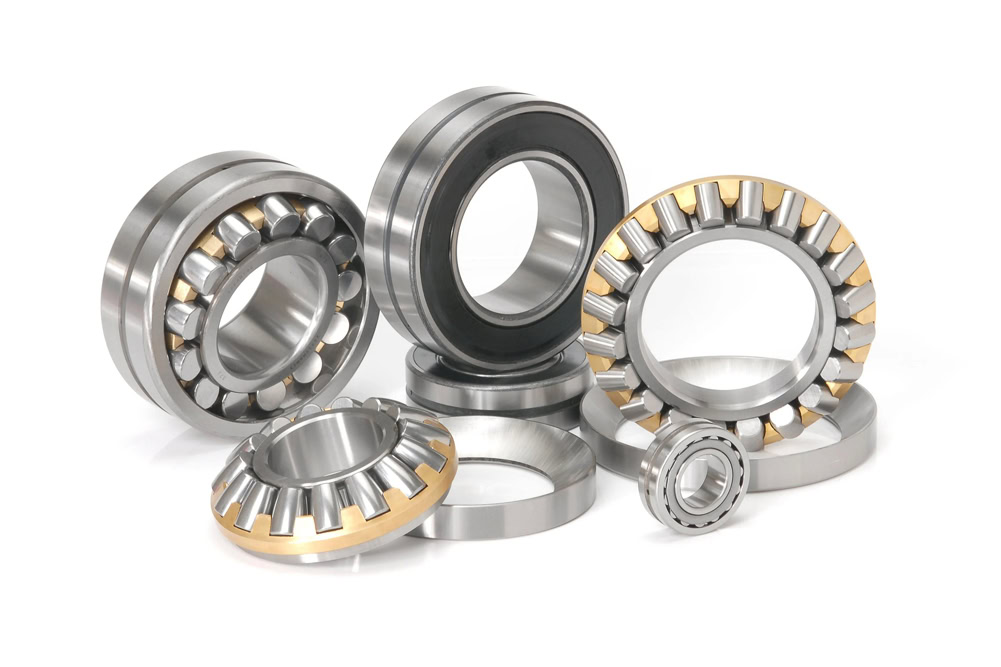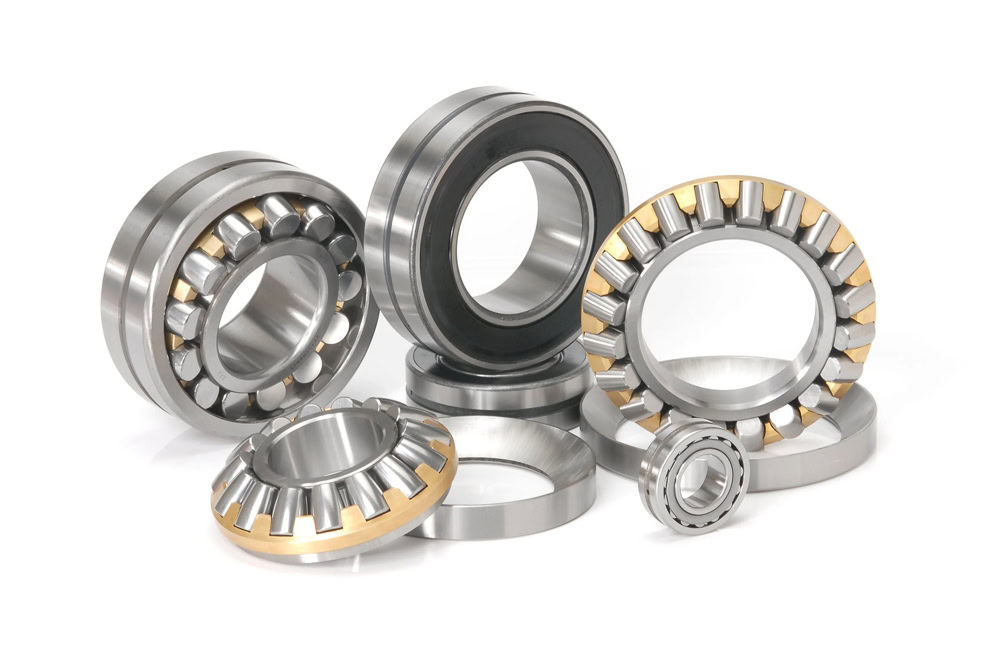
Bearing Manufacturer & Supplier
Specialize in ball bearings, roller bearings, thrust bearings, thin section bearings etc.
Guide to Roller Bearings
Roller bearings are a type of bearing widely used in various machinery and equipment. They support and guide rotation, reduce friction, and bear loads, so that mechanical equipment can operate normally and maintain efficient, reliable and stable working conditions. They play an important role in mechanical operation. This article will introduce the relevant knowledge of roller bearings in detail to help readers better understand this important mechanical component.
Table of Contents
ToggleWorking Principle of Roller Bearings
Roller bearings are mainly composed of inner rings, outer rings, rolling elements and cages. The inner and outer rings are usually made of high-carbon steel, chrome steel, stainless steel, ceramics and other materials, and the surface is quenched to improve hardness and wear resistance. The rolling element is the core element in the bearing. It can be cylindrical, conical or spherical. It reduces friction and supports the shaft by rolling between the inner and outer rings. The function of the cage is to keep the position of the rolling element stable and prevent them from colliding with each other.

When the shaft rotates through the rolling element between the inner and outer rings, due to the shape characteristics of the rolling element, it can roll between the inner and outer rings, thereby reducing friction and allowing the shaft to rotate easily. At the same time, the number and arrangement of rolling elements will also affect the bearing’s load capacity and service life.
Types of roller bearings
There are many types of roller bearings, which can be divided into different types according to different classification methods. According to the shape of the rolling element, roller bearings can be divided into cylindrical roller bearings, tapered roller bearings, spherical roller bearings, etc.; according to the bearing structure, they can be divided into single-row bearings, double-row bearings, thrust bearings, etc.; according to the bearing load direction, they can be divided into radial bearings, thrust bearings and radial thrust bearings, etc. There are many types of roller bearings, and each type of roller bearing has its own unique characteristics and application range. The following is an introduction to the main types of roller bearings and their comparison:

Cylindrical roller bearings
The rollers of this type of bearing are usually arranged in parallel, mainly bearing radial loads, and can also withstand a certain degree of axial loads. They have high radial load capacity and high speed. According to whether the ring has ribs, cylindrical roller bearings can be further subdivided into NU type, NJ type, NUP type, etc.

Tapered roller bearings
The rollers of this type of bearing are conical, so they can withstand radial loads and axial loads at the same time. They are usually used to bear combined loads dominated by radial loads, and in the case of large taper angles, they can also bear combined loads dominated by axial loads. The split design of tapered roller bearings makes it easier to install and disassemble.

Spherical roller bearings
This type of bearing has two rows of rollers and is mainly used to bear large radial loads and axial loads in a single direction. They have an automatic self-aligning function and can compensate for the misalignment of the axis caused by the deflection or non-concentricity of the shaft or housing. Spherical roller bearings can be divided into R type, RH type, RHA type and SR type according to different internal structures.

Thrust roller bearings
This type of bearing is mainly used to bear axial loads, and its nominal contact angle is greater than 45°. Thrust roller bearings include thrust spherical roller bearings, thrust cylindrical roller bearings and thrust tapered roller bearings. They are designed to withstand certain radial loads while bearing axial loads.
Advantages of roller bearings
Cylindrical roller bearings and tapered roller bearings perform well in bearing radial loads, but tapered roller bearings can also bear larger axial loads.
Spherical roller bearings have an automatic self-aligning function while bearing radial loads, and can adapt to the deformation of the shaft or housing.
Thrust roller bearings are mainly used to bear axial loads, and have high load-bearing capacity and rigidity.
When selecting the type of bearing, it should be selected according to the actual working conditions and requirements to ensure that the performance and life of the bearing are optimal.
Application of roller bearings
Roller bearings are widely used in various machinery and equipment, such as automobiles, trains, airplanes, machine tools, etc. In these fields, roller bearings play an important role, such as supporting rotating shafts, reducing friction, and improving mechanical efficiency. At the same time, with the continuous advancement of technology and the continuous changes in application requirements, the design and manufacturing of roller bearings are also constantly improving and innovating. The application scenarios of roller bearings are very wide, and their characteristics such as high efficiency, high reliability and long life meet various different application requirements. The following are some common application scenarios:
Automotive industry: Roller bearings are widely used in the automotive industry, such as transmissions, engines, transmission systems, etc. In these occasions, roller bearings are used to support rotating shafts, transmit torque and reduce friction, which improves the performance and reliability of automobiles.
Railway transportation: Roller bearings are widely used in railway locomotives and EMUs, such as wheel axle bearings, suspension bearings, etc. These bearings need to withstand large loads and impacts, and are required to have high reliability and long life.
Aerospace: In the field of aerospace, roller bearings are also widely used due to high-speed rotation and high-precision requirements. For example, the main shaft bearings in aircraft engines, the rotor bearings in helicopters, etc.
Industrial machinery: Roller bearings are widely used in industrial machinery, such as motors, reducers, pumps, compressors, etc. In these occasions, roller bearings are used to support the rotating shaft, transmit power and reduce friction, which improves mechanical efficiency and reliability.
Medical equipment: Roller bearings are also needed in some medical equipment, such as medical centrifuges and dental drills. In these occasions, roller bearings need to have the characteristics of high precision, low noise and no pollution.
Conclusion
As an important mechanical component, the working principle, type and application of roller bearings are very important. By understanding the relevant knowledge of roller bearings, we can better understand their performance and application, and provide a useful reference for the maintenance and improvement of mechanical equipment.
